#central American spider monkey
Explore tagged Tumblr posts
Text



My girlfriend went on a trip recently and sent over some cool fellas she found and I wanted to share!
A white nosed coati, a central American spider monkey, and a few pond sliders!
#animals#nature#critters#mammals#wild life#wildlife#coati#white nosed coati#mokey#spider monkey#central American spider monkey#pond slider#turtles
13 notes
·
View notes
Text
Happy #MonkeyDay 🐒!

Carved Cylinder Vase with Spider Monkeys
Maya, Eastern Peten Lowlands, Belize
Late Classic Period, c.650-750
Earthenware with brown-black slip
22.5 x 11.5 cm (8 7/8 x 4 1/2 in.)
Gardiner Museum G83.1.135
🆔 Geoffroy's Spider Monkey (Ateles geoffroyi) is the only extant native species in modern Belize.

#animals in art#animal holiday#monkey#Spider Monkey#Maya art#Indigenous art#Central American art#Gardiner Museum#Monkey Day#Geoffroy's Spider Monkey#vase#cylinder vase#pottery#ceramics#species ID#primate
42 notes
·
View notes
Text
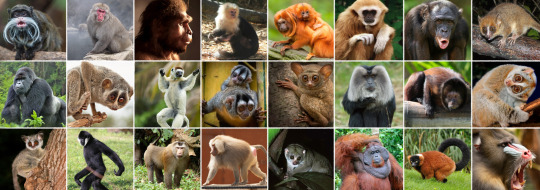
🦍The primate tournament list of candidates has been finalised! Polls will start going up soon!🦧
Thank you to everyone who submitted a species! Here is the full written list:
Basal primates (non-simian primates, including Strepsirrhini and Tarsiiformes)
†Notharctus (Notharctus tenebrosus)
Calabar angwantibo (Arctocebus calabarensis)
West African potto (Perodicticus potto)
Red slender loris (Loris tardigradus)
Bengal slow loris (Nycticebus bengalensis)
Pygmy slow loris (Xanthonycticebus pygmaeus)
Senegal bushbaby (Galago senegalensis)
Brown greater galago (Otolemur crassicaudatus)
Ring-tailed lemur (Lemur catta)
Verreaux’s sifaka (Propithecus verreauxi)
†Archaeoindris (Archaeoindris fontoynontii)
†Megaladapis (Megaladapis madagascariensis)
Madame berthe’s mouse lemur (Microcebus berthae)
Aye-aye (Daubentonia madagascariensis)
Philippine tarsier (Carlito syrichta)
Pygmy tarsier (Tarsius pumilus)
New world monkeys (Platyrrhini)
Wied’s marmoset (Callithrix kuhlii)
Goeldi’s marmoset (Callimico goeldii)
Bearded emperor tamarin (Saguinus imperator subgrisescens)
Golden-headed lion tamarin (Leontopithecus chrysomelas)
Panamanian white-faced capuchin (Cebus imitator)
Central American squirrel monkey (Saimiri oerstedii)
Gray-bellied night monkey (Aotus lemurinus)
Bald uakari (Cacajao calvus)
Madidi titi monkey (Plecturocebus aureipalatii)
Atlantic titi monkey (Callicebus personatus)
Black bearded saki (Chiropotes satanas)
White-faced saki (Pithecia pithecia)
Colombian red howler (Alouatta seniculus)
Brown spider monkey (Ateles hybridus)
Northern muriqui (Brachyteles hypoxanthus)
Yellow-tailed woolly monkey (Lagothrix flavicauda)
Old world monkeys (Cercopithecidae)
Mantled guereza (Colobus guereza)
Zanzibar red colobus (Piliocolobus kirkii)
Nepal gray langur (Semnopithecus schistaceus)
Silvery lutung (Trachypithecus cristatux)
Golden snub-nosed monkey (Rhinopithecus roxellana)
Proboscis monkey (Nasalis larvatus)
Red-shanked douc (Pygathrix nemaeus)
Collared mangabey (Cercocebus torquatus)
Japanese macaque (Macaca fuscata)
Rhesus macaque (Macaca mulatta)
Hamadryas baboon (Papio hamadryas)
Mandrill (Mandrillus sphinx)
Gelada (Theropithecus gelada)
Common patas monkey (Erythrocebus patas)
Bale mountains vervet (Chlorocebus djamdjamensis)
De brazza’s monkey (Cercopithecus neglectus)
Apes (Hominoidea)
Lar gibbon (Hylobates lar)
Pileated gibbon (Hylobates pileatus)
Kloss’s gibbon (Hylobates klossii)
Northern white-cheeked gibbon (Nomascus leucogenys)
Siamang (symphalangus syndactylus)
†Junzi (Junzi imperialis)
Bornean orangutan (Pongo pygmaeus)
†Gigantopithecus (Gigantopithecus blacki)
†Dryopithecus (Dryopithecus fontani)
Western lowland gorilla (Gorilla gorilla gorilla)
Chimpanzee (Pan troglodytes)
Bonobo (Pan paniscus)
†Australopithecus (Australopithecus afarensis)
†Panranthropus (Panranthropus boisei)
†Flores hobbit (Homo floresiensis)
†Neanderthal (Homo neanderthalensis)

The first set of polls will go up as soon as I have finished writing the descriptions! In the meantime, I would appreciate if you could share this tournament around- it won’t be much of a tournament if there aren’t that many people voting! In going down the research rabbit hole I’ve found so many interesting species and stories, and I promise learning about them here will be worth your time!
#primate bracket#tournament#tumblr tournament#poll#polls#primate#primates#extinct primates#biology#animals#zoology#please let me know if I made a mistake anywhere!
99 notes
·
View notes
Photo
Costa Rica: Costa Rica is a rugged, rainforested Central American country with coastlines on the Caribbean and Pacific. Though its capital, San Jose, is home to cultural institutions like the Pre-Columbian Gold Museum, Costa Rica is known for its beaches, volcanoes, and biodiversity. Roughly a quarter of its area is made up of protected jungle, teeming with wildlife including spider monkeys and quetzal birds.

Manzanillo, Limón, Costa Rica
4K notes
·
View notes
Text
Costa Rica
Costa Rica is a rugged, rain-forested Central American country with coastlines on the Caribbean and Pacific. Roughly a quarter of its area is made up of protected jungle, teeming with wildlife including spider monkeys and quetzal birds. Thursday Take Me To…

View On WordPress
0 notes
Text
A towering mountain in Nicaragua has been declared a national park, giving the region a much-needed boost in conservation efforts.
The Cerro Muerto volcano, located in the central part of the country, was declared a national park this week by the Nicaraguan government. The 7,408-foot mountain is the highest point in the country and is located in a remote and rugged region characterized by its natural beauty.
The Cerro Muerto volcano is part of the Cordillera Los Maribios mountain range, and is home to many species of threatened plants and animals, such as the Central American spider monkey, the jaguarundi, and the endangered quetzal bird.
The Nicaraguan government, along with several conservation groups, have been working to protect the mountain and the surrounding area for years. The park declaration is the culmination of this effort, and includes the protection of over 60,000 acres of land.
The park will have a huge impact on the local economy, as it is expected to draw thousands of tourists each year, creating jobs and generating income. It will also help protect the biological diversity of the region, as well as provide an important habitat for some of Nicaragua’s rarest species.
The Cerro Muerto volcano is an important symbol of Nicaragua’s commitment to conservation, and its protection will help ensure that future generations can continue to enjoy the country’s unique and beautiful natural environment.
0 notes
Video
I'm starting with the second of the three zones in the small animal park: The tropical zone! A large group of spider monkeys are the first animals to arrive here, and they'll live on an island in the middle of the zone.
#monkey#spider monkey#jungle#south america#zoo tycoon 2#zoo tycoon#zoo#animals#gaming#central america#costa rica#panama#rainforest#tropical rainforest#central american spider monkey#geoffroy's spider monkey
8 notes
·
View notes
Text
Costa Rica: Costa Rica is a rugged, rainforested Central American country with coastlines on the Caribbean and Pacific. Though its capital, San Jose, is home to cultural institutions like the Pre-Columbian Gold Museum, Costa Rica is known for its beaches, volcanoes, and biodiversity. Roughly a quarter of its area is made up of protected jungle, teeming with wildlife including spider monkeys and quetzal birds.

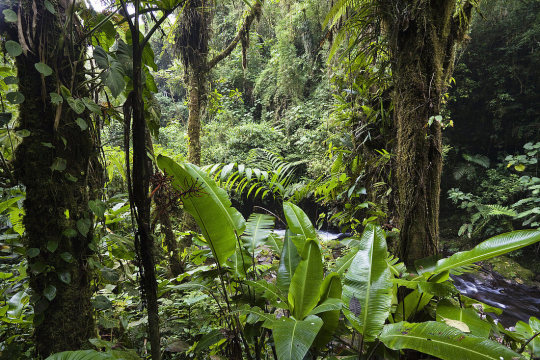


Costa Rica via
3K notes
·
View notes
Photo

Mayan cylinder vase (earthenware with brown-black slip) depicting spider monkeys. Artist unknown; ca. 650-750 CE. From the central Peten lowlands, Belize or Guatemala; now in the Gardiner Museum, Toronto.
#art#art history#Mesoamerica#Mesoamerican art#Maya#Maya art#Mayan#Mayan art#Central America#Central American art#pottery#cylinder vase#vase painting#animals in art#spider monkey#indigenous peoples#indigenous art#Gardiner Museum
186 notes
·
View notes
Photo
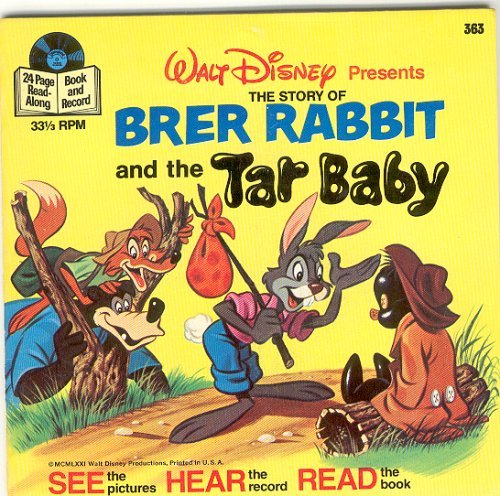

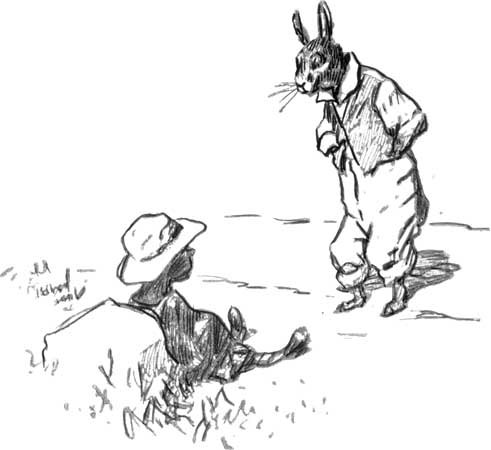
Br'er Rabbit /ˈbrɛər/ (Brother Rabbit), also spelled Bre'r Rabbit or Brer Rabbit, is a central figure in an oral tradition passed down by African-Americans of the Southern United States. He is a trickster who succeeds by his wits rather than by brawn, provoking authority figures and bending social mores as he sees fit. Popularly known adaptions are by Joel Chandler Harris in the 19th century, and later The Walt Disney Company adapted it for its 1946 animated motion picture Song of the South.

African origins
The Br'er Rabbit stories can be traced back to trickster figures in Africa, particularly the hare that figures prominently in the storytelling traditions in West, Central, and Southern Africa. These tales continue to be part of the traditional folklore of numerous peoples throughout those regions. In the Akan traditions of West Africa, the trickster is usually the spider Anansi, though the plots in his tales are often identical with those of stories of Br'er Rabbit. However, Anansi does encounter a tricky rabbit called "Adanko" (Asante-Twi to mean "Hare") in some stories. The Jamaican character with the same name "Brer Rabbit", is an adaptation of the Ananse stories of the Akan people.
The African savanna hare found all over sub-Saharan African the original Br'er Rabbit.
Some scholars have suggested that in his American incarnation, Br'er Rabbit represented the enslaved Africans who used their wits to overcome adversity and to exact revenge on their adversaries, the white slave owners.Though not always successful, the efforts of Br'er Rabbit made him a folk hero. However, the trickster is a multidimensional character. While he can be a hero, his amoral nature and his lack of any positive restraint can make him into a villain as well.
For both Africans and African-Americans, the animal trickster represents an extreme form of behavior that people may be forced to adopt in extreme circumstances in order to survive. The trickster is not to be admired in every situation. He is an example of what to do, but also an example of what not to do. The trickster's behavior can be summed up in the common African proverb: "It's trouble that makes the monkey chew on hot peppers." In other words, sometimes people must use extreme measures in extreme circumstances. Several elements in the Brer Rabbit Tar Baby story (e.g., rabbit needing to be taught a lesson, punching and head butting the rabbit, the stuck rabbit being swung around and around) are reminiscent of those found in a Zimbabwe-Botswana folktale.
Folklorists in the late 19th century first documented evidence that the American versions of the stories originated among enslaved West Africans based on connections between Br'er Rabbit and Leuk, a rabbit trickster in Senegalese folklore.
The stories of Br'er Rabbit were written down by Robert Roosevelt, an uncle of US President Theodore Roosevelt. Theodore Roosevelt wrote in his autobiography about his aunt from the State of Georgia, that "She knew all the 'Br'er Rabbit' stories, and I was brought up on them. One of my uncles, Robert Roosevelt, was much struck with them, and took them down from her dictation, publishing them in Harper's, where they fell flat. This was a good many years before a genius arose who, in 'Uncle Remus', made the stories immortal."

These stories were popularized for the mainstream audience in the late 19th century by Joel Chandler Harris (1845–1908), who wrote down and published many such stories that had been passed down by oral tradition. Harris also attributed the birth name Riley to Br'er Rabbit. Harris heard these tales in Georgia. Very similar versions of the same stories were recorded independently at the same time by the folklorist Alcée Fortier in southern Louisiana, where the Rabbit character was known as Compair Lapin in Creole. Enid Blyton, the English writer of children's fiction, retold the stories for children.
#african#louisana#african culture#kemetic dreams#rabbit#br'er rabbit#gullah#gullah geechee#senegal#leuk#adanko#asante#song of the south#african american#Georgia#theodore roosevelt#joel chandler harris#riley#english writer#creole
706 notes
·
View notes
Note
What do you think would have lived in the Rapture zoo?
Rapture Zoo Headcanons
Probably in the same part of the city as Fort Frolic, though not built within the same mall/theater complex as the rest of the facilities. Rather it has its own structure nearby, and would have been connected to the Fort via a long glass walkway that opened onto the lower atrium.
In terms of species, there are no "local" land animals, so creatures would be chosen (typically in pairs) by a combination of accessibility, perceived exoticness, & size requirements. (While single animals would be cheaper and easier to maintain, couples bring in more guests.) Many are unfortunately acquired through the black market or flat-out smuggled from their place of origin.
As far as who is calling the Rapture Zoo home, I did my research and tried to create a menagerie fitting of Rapture's climate! Here are my proposals, explained (with pictures!) I also have a layout in mind if anyone is curious. But that's for another day!
The Main Exhibits

1. East African Lion (Panthera leo melanochaita)
Amount: Two (mated pair; acquired from defunct surface zoo)
Why: Although one of the rarer species of lion found worldwide, the East African Lion breed is one of the smallest species of lion in the known world, making the space and material required to house and feed them lesser than the needs of its larger relatives. The draw of a real live lion would be invaluable to public interest and ticket sales, so the smaller subspecies would be better for both investors and suppliers alike.

2. American Black Bear (Ursus americanus)
Amount: One (bought from UK circus)
Why: An imposing and visually striking figure, the black bear was chosen as a familiar yet fascinating creature to draw in crowds. Also, they help drive up teddy bear sales something fierce.

3. Arabian Leopard (Panthera pardus nimr)
Amount: One (bought in a black market trade)
Why: Easily one of the most endangered subspecies of leopard known today, the Arabian leopard is also the smallest of the its kind. One of the most expensive subjects purchased for the Rapture Zoo, it was brought as an alternative to satisfy the distinct lack of tigers in the zoo, as the majority of tiger subspecies would be much larger and unwieldy to transport, feed and house.

4. Mexican Grey Wolf (Canis lupus baileyi)
Amount: Four (bonded pack; acquired from defunct surface zoo)
Why: Once again chosen for their combination of smaller size and potential crowd pull, this small pack is notable for requiring much less food and housing than other wolf species, while still being the genuine package.
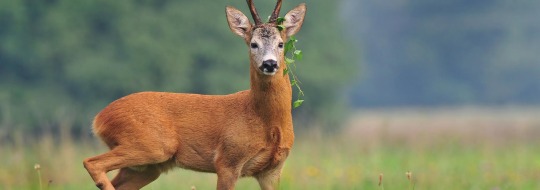
5. Roe Deer (Capreolus capreolus)
Amount: Five (bonded herd; poached from Norwegian woodlands)
Why: Visually appealing while still being a smaller and thankfully incredibly populous subspecies of deer, the roe deer were also chosen for their less-intensive dietary needs and charming counterpoint to the drama of the carnivores in the zoo.

6. Central American Squirrel Monkey (Saimiri oerstedii)
Amount: Seven (Intergrated barrel; acquired from two seperate surface zoos)
Why: Small, amusing and intelligent, this subspecies of spider monkey was chosen not only for its reduced size and charming appearance, but also for its populous numbers that make the specimens easily replaceable.
The Aviary
With two of both subspecies of macaw and four of other listed species, the population of Rapture's aviary was chosen on a basis of loose compatibility and vibrant feather coloration.

7. Blue & Yellow Macaws (Ara ararauna)
8. Scarlet Macaws (Ara macao)
9. Sun Conures (Aratinga solstitialis)
10. Common Parakeets (Melopsittacus undulatus)
The Reptile Room
With a troop of seven frogs, two of each lizard and one python, the reptiles of Rapture Zoo are chosen for their bright pigmentation and exotic appearance without being too deadly or complicated to care for.

11. Red-Eyed Tree Frogs (Agalychnis callidryas)
12. (Albino) Ball Python (Python regius)
13. Carpet Chameleons (Furcifer lateralis)
14. Leopard Gecko (Eublepharis macularius)
The Petting Zoo
A miniature farm complete with a tiny barn and scarecrow, the Rapture Petting Zoo has one cow, four pigs, and one rooster with two hens. As it's a special, more interactive part of the zoo, patrons must pay a second fee, usually 50% of the standard ticket, to interact with the animals. All the species were chosen for their smaller size and/or docility.

15. Dexter Cow (Bos taurus taurus)
16. Kunekune Pigs (Sus scrofa domesticus)
17. Cornish Game Chickens (Gallus gallus domesticus)
I also think the managers and owners had a plan to trade out/sell off animals to keep interest high, but the city fell before a plan could have been made.
144 notes
·
View notes
Text
Costa Rica: Costa Rica is a rugged, rainforested Central American country with coastlines on the Caribbean and Pacific. Though its capital, San Jose, is home to cultural institutions like the Pre-Columbian Gold Museum, Costa Rica is known for its beaches, volcanoes, and biodiversity. Roughly a quarter of its area is made up of protected jungle, teeming with wildlife including spider monkeys and quetzal birds.

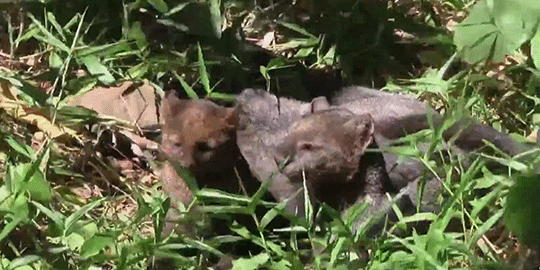

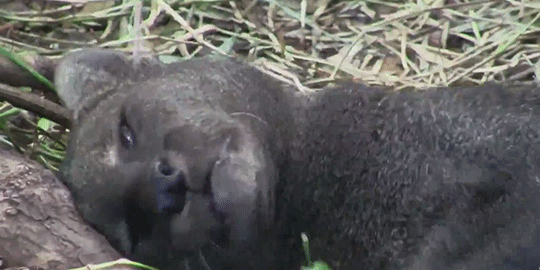


The jaguarundi is a relatively secretive species of medium-sized cat, native to the Americas. In many ways it resembles a large mustelid, but its closest relative is the cougar. It lives alone or occasionally in pairs in a large home range, and more often hunts in the day than other sympatric cats like ocelots. ©SilverSpot Productions
3K notes
·
View notes
Text
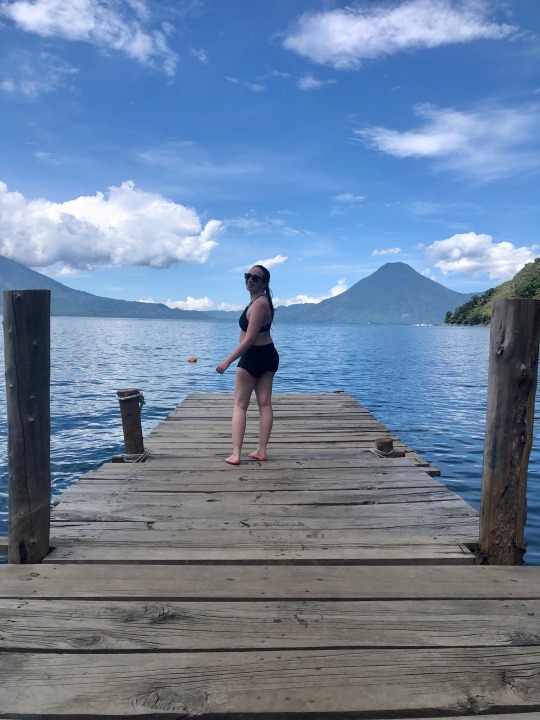


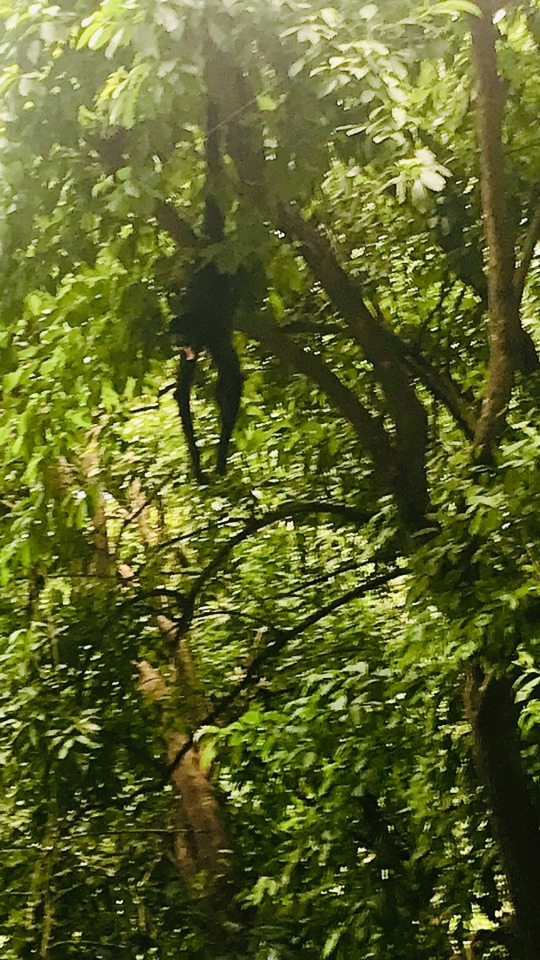

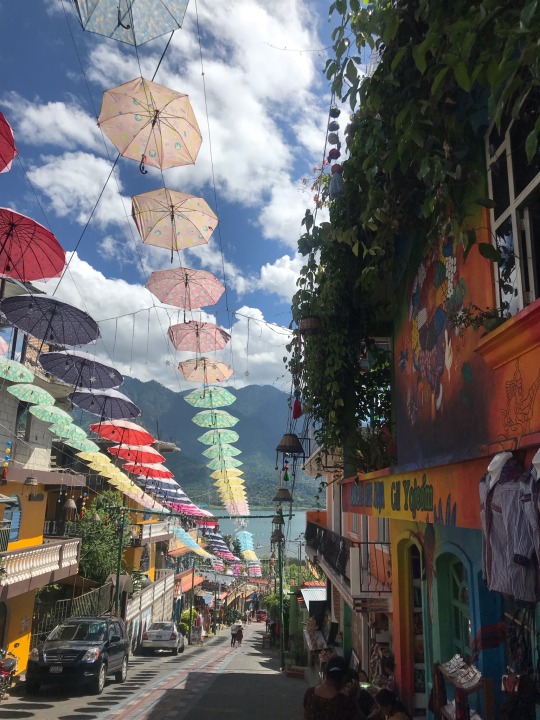

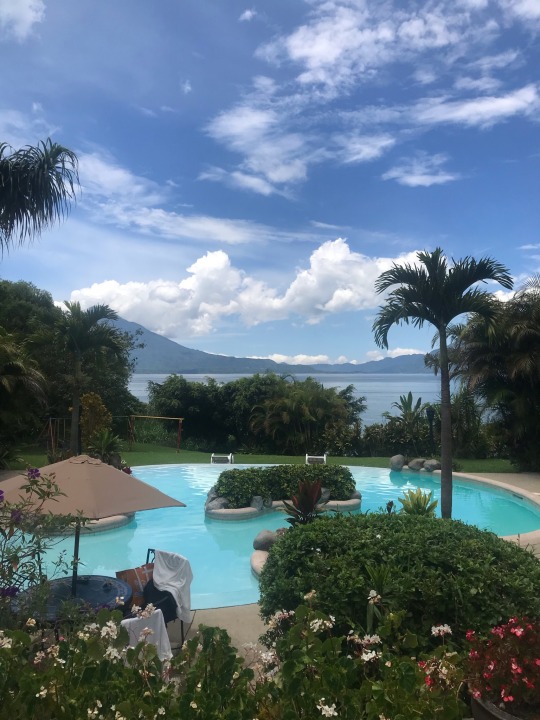

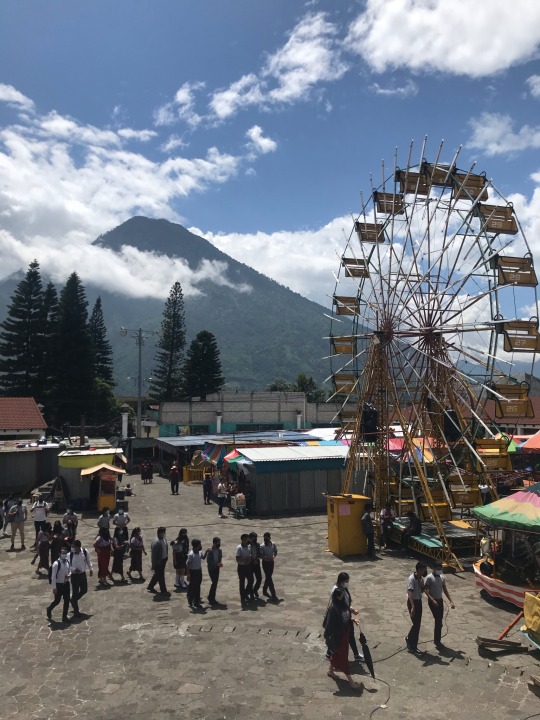
Guatemala Days 7-11
Lake Atitlan
The last 4 days have been spent at Lake Atitlan in the town of Panajachel. On Saturday Emily arrived to Antigua and to our surprise we got upgraded to a deluxe suite which was very fancy.
The next morning we took a shuttle to Panajachel, one of at least 11 towns on the shore of Lake Atitlan. Lake Atitlan is an enormous lake formed from a volcanic crater that is thousands of meters deep. There are at least 3 separate languages spoken by the indigenous people in the surrounding area, that’s how big around the lake is.
On Monday we explored the Atitlan Nature Reserve which was really cool. We hiked to the lakeshore, went across suspension bridges through the jungle, and saw spider monkeys and coatís (a central american variety of raccoons which only live in high altitude jungles).
On Tuesday we did a tour of three different towns along the lake. We got to the different towns by boat. First we went to San Juan La Laguna which had a lot of fair trade textile co-ops. This has helped combat a lot of social problems such as poverty and lack of education access, and has helped elevate indigenous women of the area. Several families team together to weave and form the co-op and whatever the co-op sells the profits are divided equally amongst themselves. A requirement for entering the co-op is enrolling children in school. We visited one of these co-ops and learned more about the weaving process which is incredibly complex. It take between 3 weeks to 3 months to weave a single garment. Unfortunately a lot of factory made copycat products are sold on the street for less than a 10th of what it costs to produce handmade products.
After San Juan La Laguna we stopped in San Pedro La Laguna for a drink. This town has a lot of expats and unfortunately has lost a lot of its ties to their indigenous culture. It’s now known as a party town (San Pedro La Locura is the nickname).
Finally we went to Santiago Atitlan, the largest of the lakeside towns. Even though it was only 15 minutes away by boat from San Pedro they spoke a completely different Mayan language (there are 22 Mayan languages spoken in Guatemala and most are completely unrelated to each other linguistically).
In Santigao Atitlan we visited some religious sites. They practice synchronism between Catholicism and traditional Mayan practices. We visited a church where both Mayan ceremonies and Catholic Mass are practiced, often at the same time. It was very similar to a church I visited in Chiapas, Mexico in the town of San Juan Chamula which also practiced Mayan-Catholic synchronism.
We also visited the shrine to the local deity Maximón. The deity is believed to inhabit a wooden statue and the shrine location rotates to different homes every year. It is tended to by the family living in the home and a shaman. The statue is over 500 years old.
On Wednesday we got a day pass to a local resort for $20 and we got to use their pool, beach, and got lunch. It was very luxurious. We walked back to our hotel from the resort and barely missed a huge thunderstorm. It started maybe 10 minutes after we got back. The lightning caused a power outage in Panajachel which lasted nearly 30 hours. We had to navigate by flashlight and eventually candlelight once the flashlight died. It was very spooky but also kind of nice to be disconnected from everything.
I’ll post again tomorrow to tell about today’s trip to Chichicastenango. Until then,
#panajachel#guatemala#central america#lake atitlan#santiago atitlan#san juan la laguna#san pedro la laguna#travel
7 notes
·
View notes
Text
Saturday July 11th 2020
Devotee Challenge: Loki
How do you perceive Loki?
For the majority of the past six years I have perceived Loki mainly through emotional feedback and colors and very very rarely in dreams. I've always jived with the lanky redhead aspect that many see in the art that floats around in the Lokean circles. But I have also seen Loki as this aspect that is very much an "on the road" Trickster Face, with a heavily Lord of the Rings' Strider look to Them, but with brown skin, eyes like molten gold, and a broad sturdy build. I met that aspect in astral once and was absolutely delighted to, because it was one of about 5 singular meetings where I could actually see and identify Loki.
It wasn't until this year that I fully grasped why I could barely "hear" or "see" Loki.
I work closely with an aspect of Loki who is nonverbal or mute at times, and visually impaired or blind at times, and sometimes both.
So much of my past dealings with Loki and my perceptions of Loki have been filtered through emotional senses, and with an understanding that "Loki is quiet." Early on, this used to worry me. I would worry that Loki was hurt or exhausted or in need of a safe space to just rest. And so that is what I build a relationship on. I offered everything I wanted from Loki: safety, home, love, protection, laughter, somewhere to belong, family and acceptance.
So. I believe I get Bound Loki the most. Bound Loki or "Older Loki" or "been there, done that, bought the T-shirt, founded the support group and now I need retirement funds, Loki."
That's not the only side of Loki I get, but it's who I consider "home base."
That's how I perceive Loki when He's not a Xe or Them or Fox. Because I also perceived Loki as genderqueer and gender-fluid and non humanoid at times as well. Loki is after all a shape-shifting trickster and don't need no stinking gender or body rules, so put a star next to that or something.
Methods of Communication:
Best for me: tarot, dreams, empathy, synchronized signs, music, trance.
Loki prefers: I'm still working on this with Loki. It's been brought to my attention since discovering Loki is nonverbal / visually impaired at times that They want to work on communication more with me.
Historical: Runes. Universal methods? Prayer in general?
Is Loki often compared to other deities from different pantheons or cultures?
Yes. Loki is a trickster. They're compared and contrasted with or against other tricksters. Even, and this bugs me, with the Christian Devil or Satan. Loki is held up against beings such as other Trickster Spirits like certain Native American tribes' Coyote or Spider. And other pagan gods like: Hermes, Set, Mercury, and Manannán.
And the Chinese historical hero the Monkey King. And the Japanese god Susanoo. Just. You get the picture.
What kind of relationship do you want with Loki?
I want the relationship I've got with Them. One built on love and trust and companionship and the understanding that has blossomed from 6 + years of steady unwavering presence, even in times of silence and pain.
I want what I've got. I want what's good for us both. I want to never ever let Loki go. I want to grow with Them, alongside Them, closer to Them.
That's what I want. At least presently. There's always room for more.
Are we platonic?
We were. For years. We aren't anymore. As of about May/June of this year.
Do I worship them? Yes. Loki is 1/3 of my inner familial circle of gods. And Loki is the central pillar and the foundation of my faith. Loki is the blood of my spirituality and lives in the heart of it. He has an altar, though has always said it wasn't needed. (I buy Loki shit and They haven't minded in the past 6 years, so I see fit to keep it up.) The altar may not be needed but Loki appreciates the care.
How does your relationship affect your everyday life?
Loki keeps me sane. Loki is a constant in my daily life and has been since I came to Them. They're present everywhere I can shove pieces of Them. I wear and make jewelry that reminds me of Loki. I decorate my room with artwork that makes me think of Them. (Odin has also taken over Decor.) The media I love to consume. The blogs I've kept for years. The friends I've made and treasured. Loki is everywhere. And I wouldn't have Them any other way. Loki is integrated and rooted deeply in the garden that is Me. I prefer it that way. Loki is my comfort and safety. Loki is home.
What are Loki's interests outside of canon/lore?
Spongecake. They like it. *snorts* I had to. Sorry not sorry.
Well, I'd like to talk about the Super Soft shit we enjoy together. Loki is a bigger cuddler than I think they get credit for. Like, our naps? Hugs? Sharing blankets and curling up together? Fuck yeah.
Now, you must consider I work/live with a Loki who is A) a source of safety to me and B) hurting and tired a lot. So yeah. *shoves a Loki mug across the table* Fill that shit up with physical affection and positive touch.
*tries to think of shit that's not quite so gooey*
*buffering symbol*
Loki, for all that They're a mover-and-shaker, likes quiet. Loki appreciates sharing space calmly with people. Downtime and relaxing activities are a good. Whether it's bubble baths or watching mindless fluff TV or coloring books or just sitting together. Chilling out is a thing Loki likes and we enjoyed together.
"There's a time for work and a time for play and a time to sit the fuck down and rest." R&R is a Good in whatever form.
Loki also enjoys water. Like swimming, but also, Loki uses water metaphors and imagery with me a lot, even though They're fiery and whatnot. [Insert soundclip of Bruce Lee: "Be like water."]
Recon or No Recon?
No. No Recon. We die like Millennials at a family reunion during mealtime discussions. LOL I do both old and new things with Loki. But we're a free form, free-flowing, do-our-own-thing pair and I like it like that.
Is Loki proud or remorseful about Their lore?
Yes.
Both.
Both is good.
Look, part of being a trickster is teaching lessons in unorthodox and sometimes upsetting ways. But healing comes from the upset. New growth after the seasonal burn. That's Loki.
But Loki is not incapable of remorse. No God is incapable of remorse. But also, I feel the need to mention that while lore and history are very important to learn and acknowledge, the lore is not the be-all end-all. God's learn, adapt, grow and change just as we do.
What does Loki expect from the relationship?
We had a discussion. I got hit in the feels. Basically, we're on the same page. Loki expects me to continue growing with Them and expects to remain my safe harbor. The one I love in this deep-rooted way.
30 notes
·
View notes
Photo

Geoffroys spider monkey - Ateles geoffroi also black-handed spider monkey or the Central American spider monkey, a type of New World monkey from Central America, Nicaragua.
Departamento Rivas, Nicaragua
6 notes
·
View notes
Photo
Costa Rica: Costa Rica is a rugged, rainforested Central American country with coastlines on the Caribbean and Pacific. Though its capital, San Jose, is home to cultural institutions like the Pre-Columbian Gold Museum, Costa Rica is known for its beaches, volcanoes, and biodiversity. Roughly a quarter of its area is made up of protected jungle, teeming with wildlife including spider monkeys and quetzal birds.

“Untitled” by | Chris Henry
Rio Celeste, Tenorio Volcano National Park, Costa Rica
2K notes
·
View notes